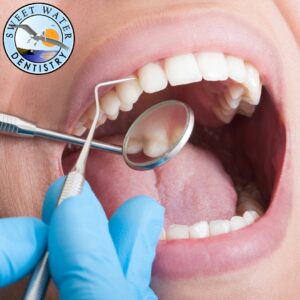Can a Crown Be Replaced if It Gets Damaged? Everything You Need to Know
Dental crowns are a common and effective solution for restoring damaged or weakened teeth. However, like any dental restoration, crowns are not indestructible. Over time, they can become damaged due to various factors such as wear and tear, trauma, or poor oral hygiene. If you have a damaged dental crown, you may wonder if it can be replaced and what the process entails. In this article, we will explore the reasons why a dental crown may need to be replaced, the replacement procedure, and how to extend the life of your crown.
Why Would a Dental Crown Need to Be Replaced?
There are several reasons why a dental crown might need to be replaced:
1. Wear and Tear
Crowns, especially those made of porcelain or composite materials, can wear down over time. Chewing, grinding, and everyday use can lead to cracks or chipping, making replacement necessary.
2. Damage from Trauma
Accidents, falls, or biting down on a hard object can cause a crown to crack or become dislodged. If the crown is broken, it may no longer provide adequate protection for the tooth underneath.
3. Decay Underneath the Crown
Although the crown itself is not susceptible to decay, the underlying tooth can still develop cavities. If bacteria accumulate at the base of the crown, decay can form underneath it, leading to pain, sensitivity, and the need for a replacement.
4. Loose or Poorly Fitting Crown
Over time, crowns may become loose due to cement deterioration or changes in the shape of the underlying tooth. A poorly fitting crown can allow bacteria to enter and cause decay, necessitating a new crown.
5. Gum Recession
Receding gums can expose the edges of a crown, making it more vulnerable to damage and decay. If significant recession occurs, a new crown may be required to ensure a proper fit and protection.
6. Cosmetic Reasons
In some cases, patients choose to replace crowns due to discoloration, mismatched aesthetics, or the desire for a more natural-looking restoration.
What Is the Process for Replacing a Damaged Crown?
If your dental crown is damaged or no longer functional, a dentist can replace it with a new one. Here’s what to expect during the crown replacement process:
1. Dental Examination
Your dentist will assess the condition of your crown and the underlying tooth using X-rays and a visual examination. They will determine whether the tooth structure is still healthy enough to support a new crown.
2. Removal of the Old Crown
The damaged crown is carefully removed using specialized tools. If it is still intact but loose, the dentist may be able to recement it. However, in most cases, a new crown is required.
3. Cleaning and Preparation of the Tooth
Once the old crown is removed, the dentist will clean the underlying tooth to remove any decay or debris. If the tooth has deteriorated significantly, additional treatments such as a buildup or root canal may be necessary before placing a new crown.
4. Taking Impressions
Impressions of your tooth are taken to ensure the new crown fits perfectly. This may be done using traditional putty molds or digital scanning technology.
5. Temporary Crown Placement
A temporary crown is placed to protect the prepared tooth while the permanent crown is being fabricated in a dental lab. This process usually takes a couple of weeks.
6. Permanent Crown Placement
Once the custom-made crown is ready, the dentist will remove the temporary crown and cement the new one in place. The fit, color, and bite alignment are carefully checked before finalizing the placement.
How to Extend the Lifespan of Your Dental Crown
While dental crowns are durable, proper care can help them last longer. Here are some essential tips for maintaining your crown:
1. Practice Good Oral Hygiene
Brushing and flossing daily helps prevent plaque buildup around the crown and protects the underlying tooth from decay.
2. Avoid Hard or Sticky Foods
Chewing on hard candies, ice, or sticky foods can increase the risk of damaging your crown. Be mindful of your eating habits to prevent unnecessary wear and tear.
3. Wear a Mouthguard
If you grind your teeth at night (bruxism) or participate in contact sports, wearing a mouthguard can help protect your crown from excessive pressure or impact.
4. Visit Your Dentist Regularly
Routine dental checkups allow your dentist to monitor the condition of your crown and detect any issues early. Professional cleanings also help maintain oral health and prevent complications.
5. Avoid Using Your Teeth as Tools
Using your teeth to open packages or bite non-food objects can lead to damage. Always use appropriate tools instead of relying on your teeth.
Final Thoughts
Yes, a dental crown can be replaced if it becomes damaged. Whether due to normal wear and tear, trauma, or underlying decay, replacing a faulty crown is essential for maintaining oral health and functionality. If you suspect that your crown is damaged or loose, schedule an appointment with your dentist as soon as possible to prevent further complications.
At Sweet Water Dentistry, we specialize in high-quality dental care, including crown replacement procedures. If you need a consultation or have concerns about your existing crown, contact us today. Our team is here to help restore your smile and keep your teeth healthy for years to come!
Visit us for expert care:
Sweet Water Dentistry
📍 5915 Sweetwater Cir, Fairhope, AL 36532
🌐 sweetwatersmile.com
📞 Call or Text: (251) 210-2773
Follow us on Facebook and Instagram for the latest updates and special offers!

